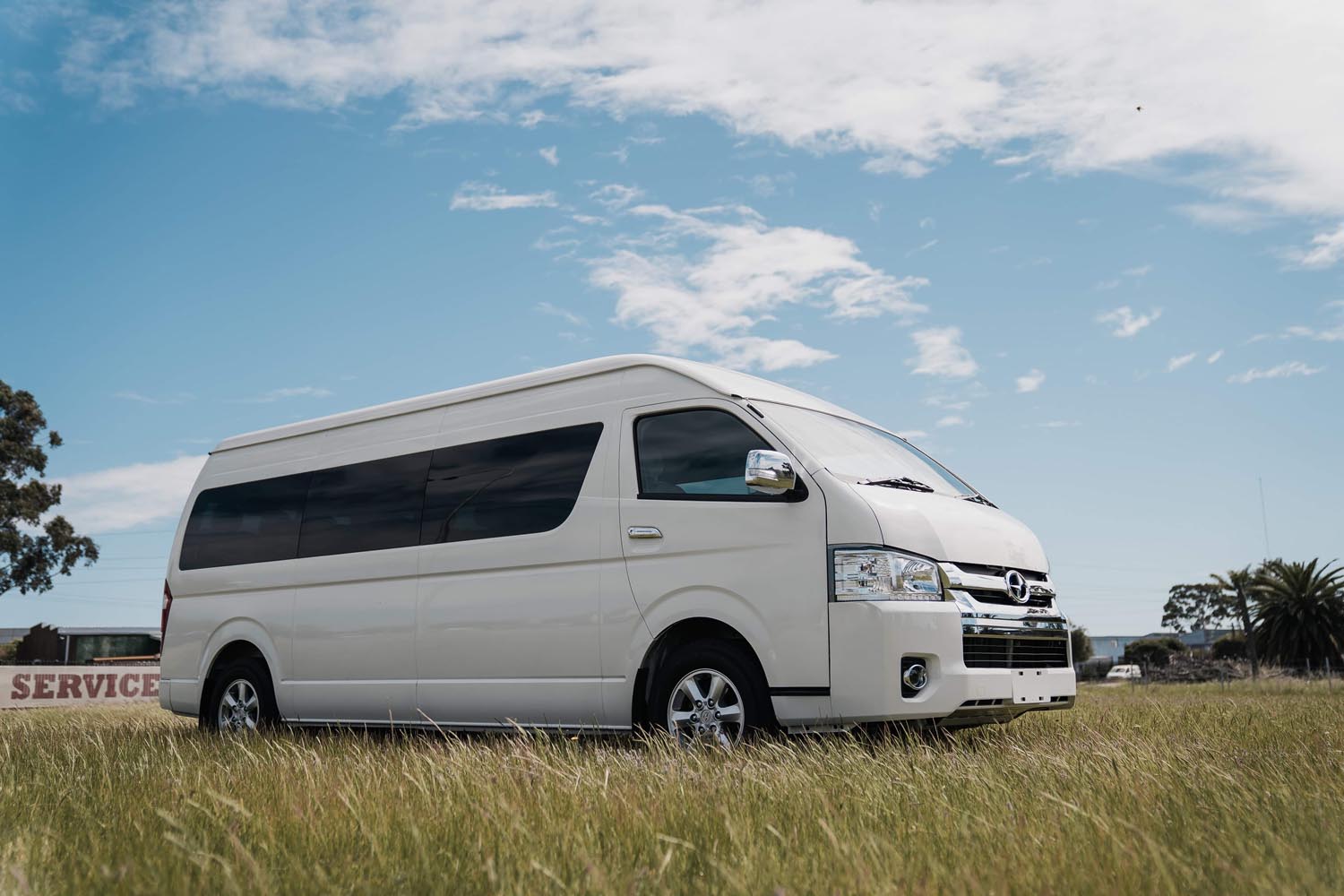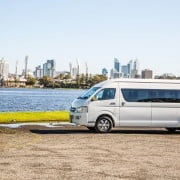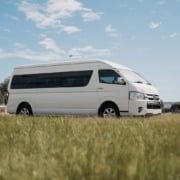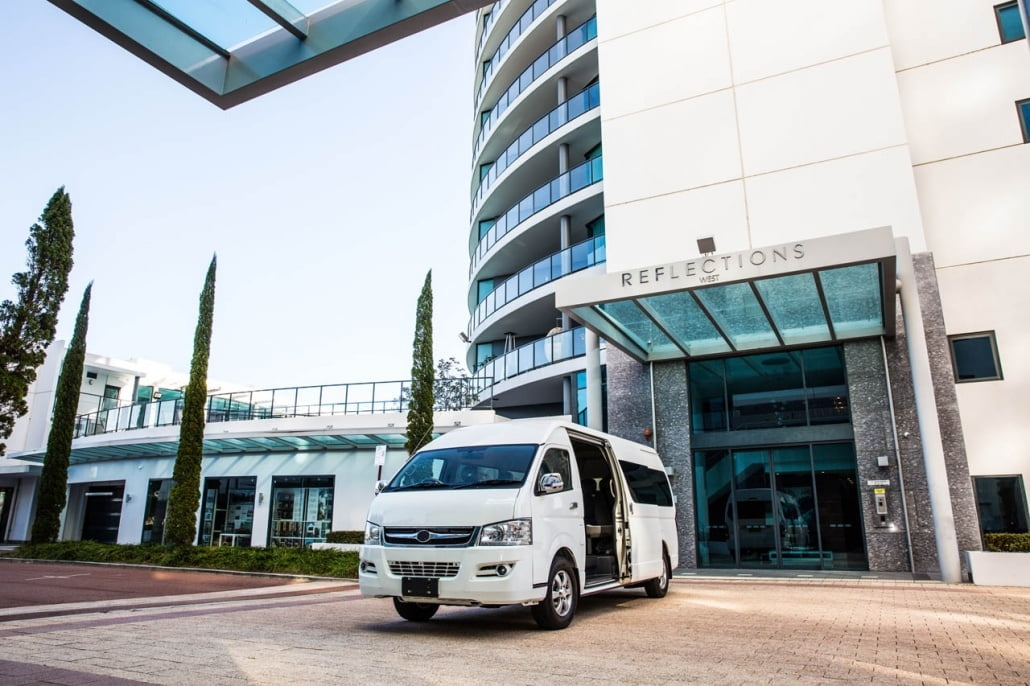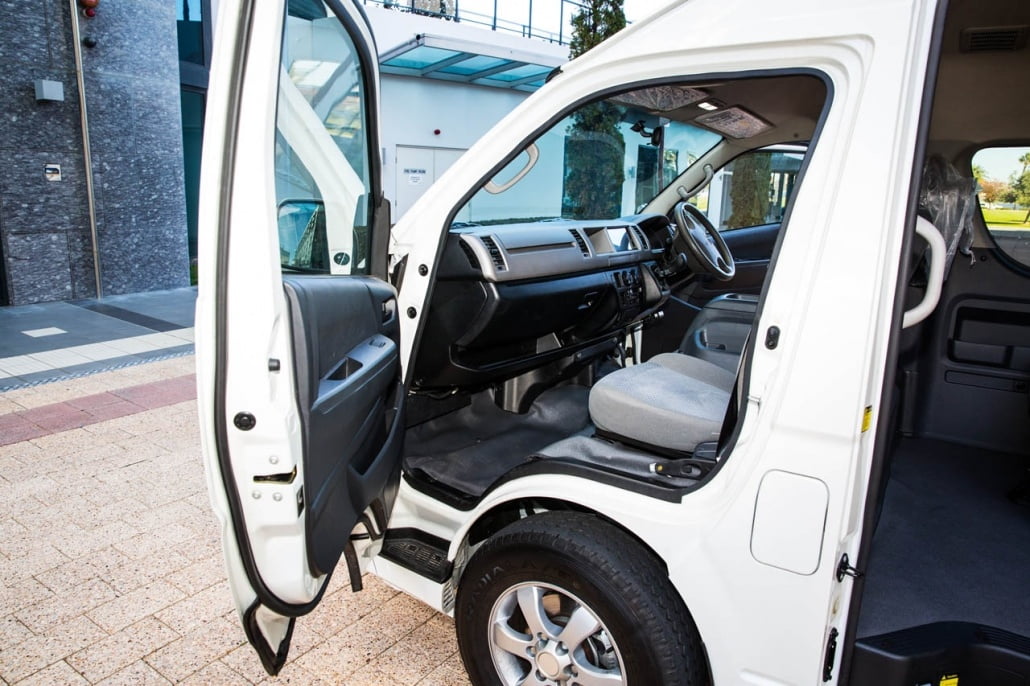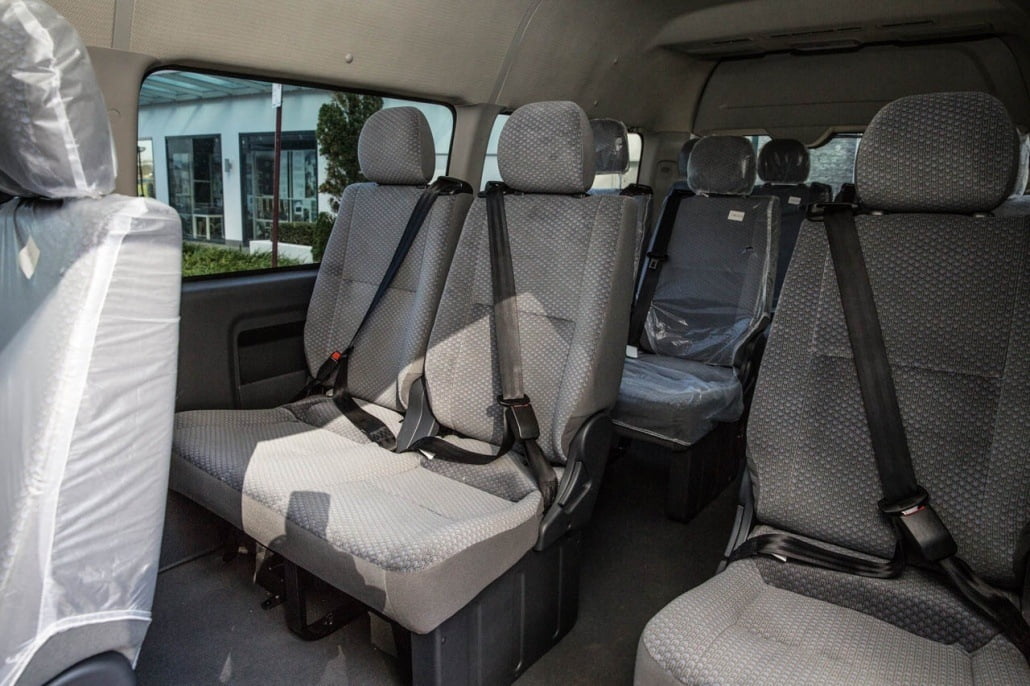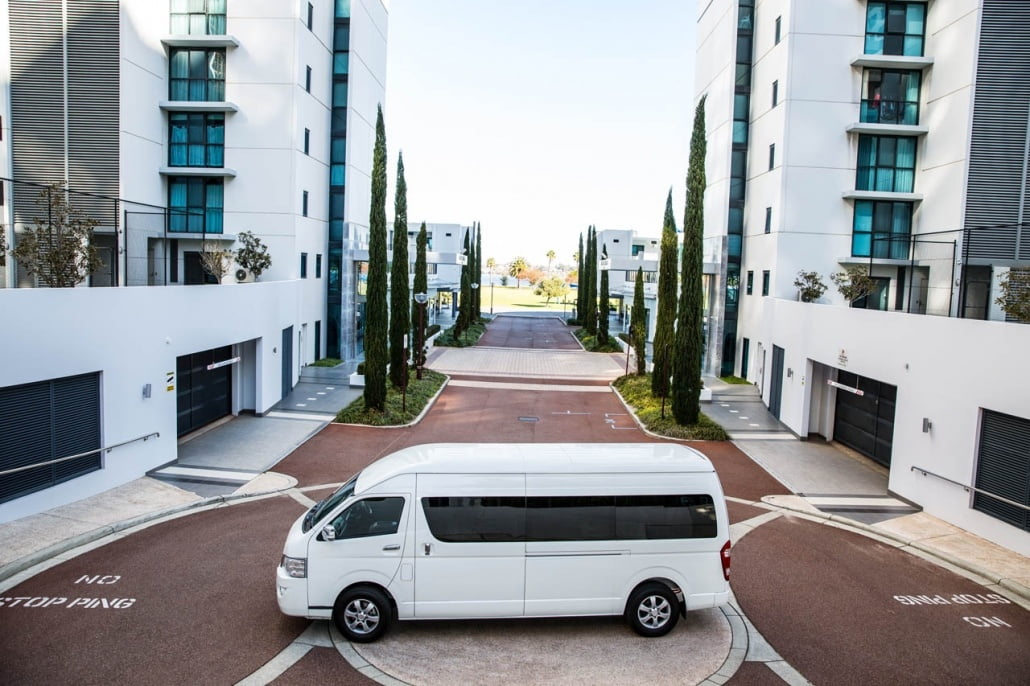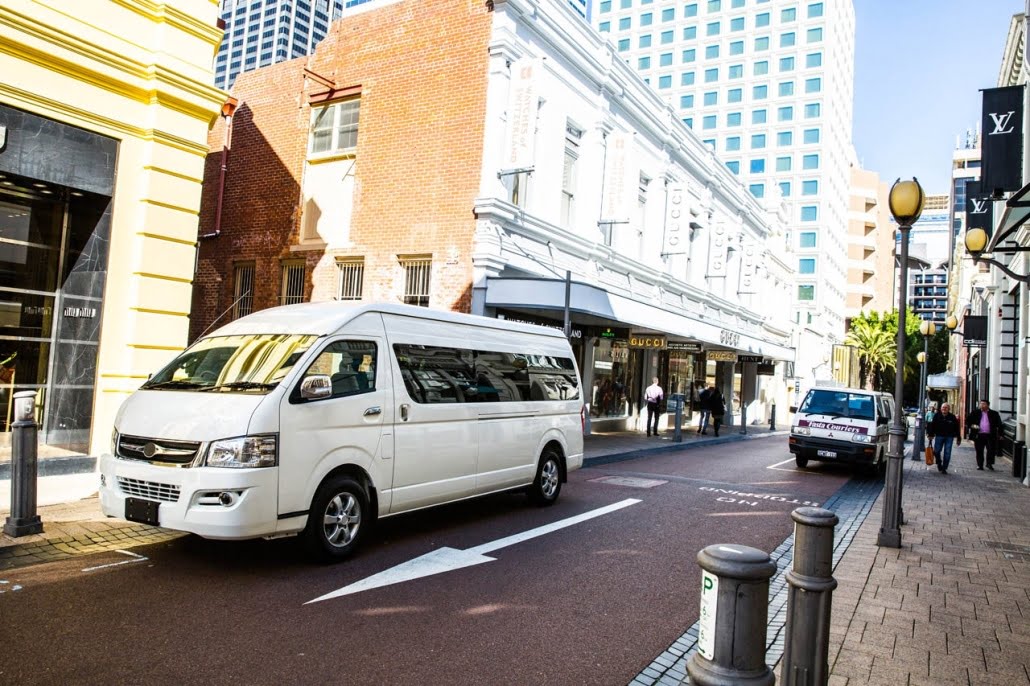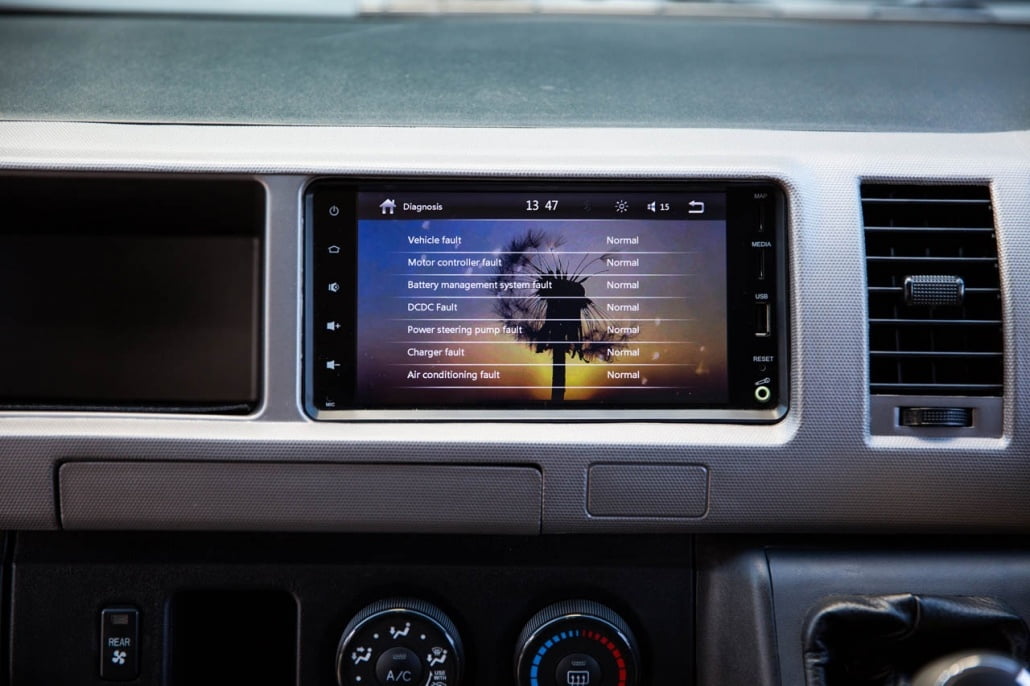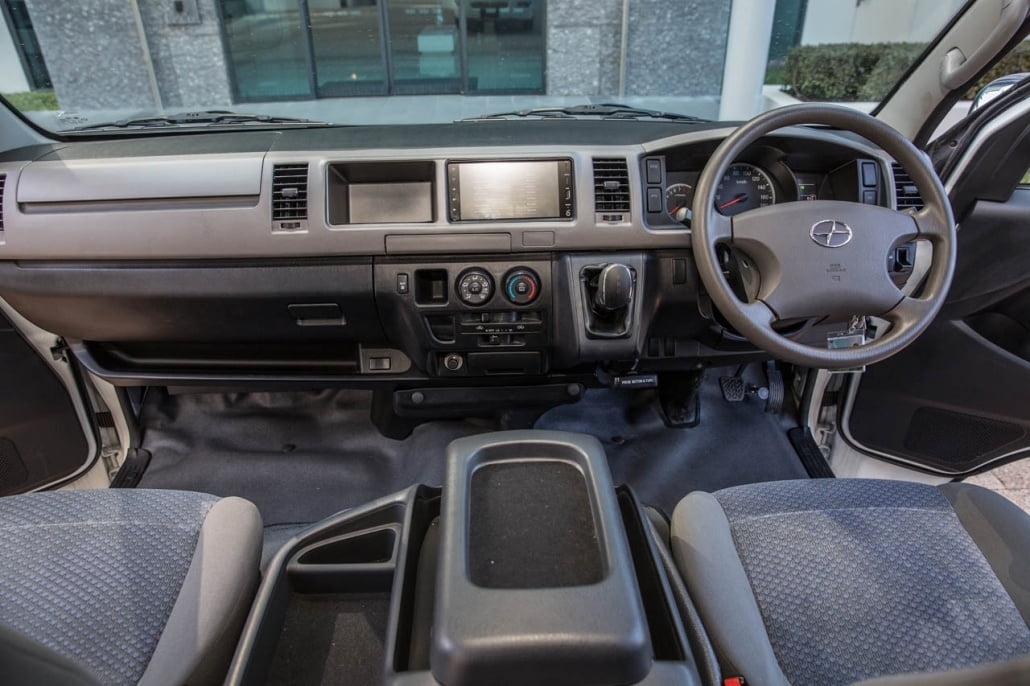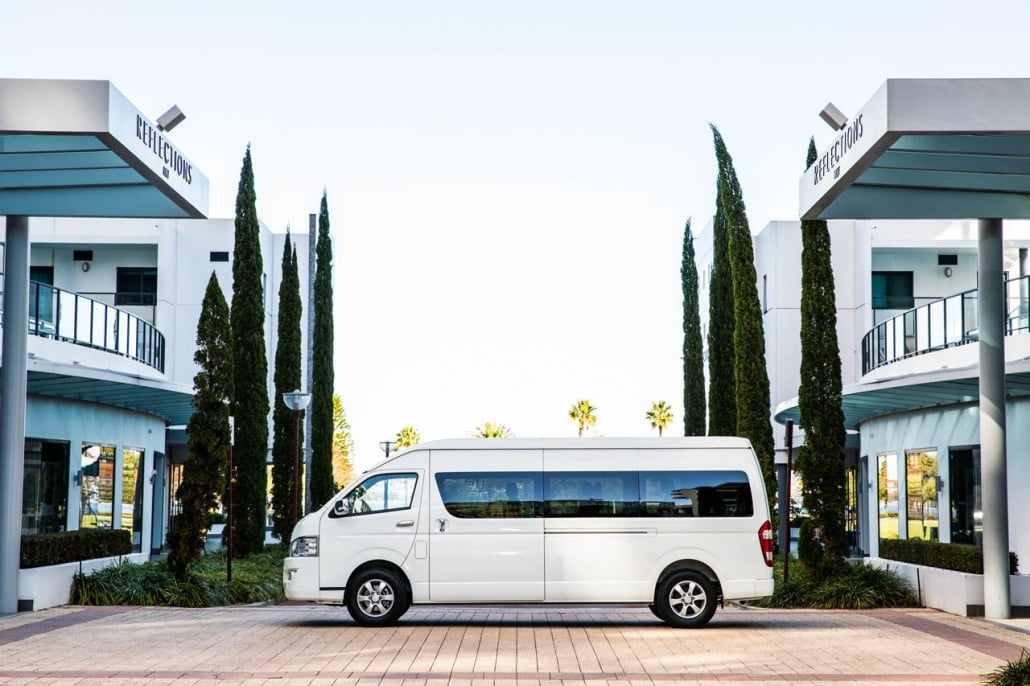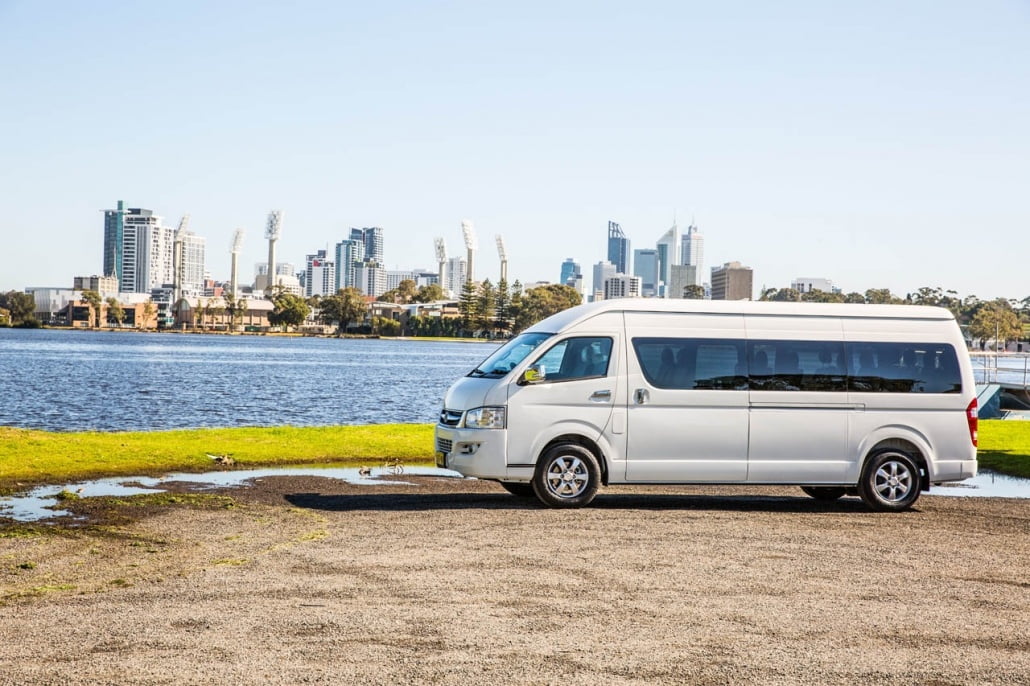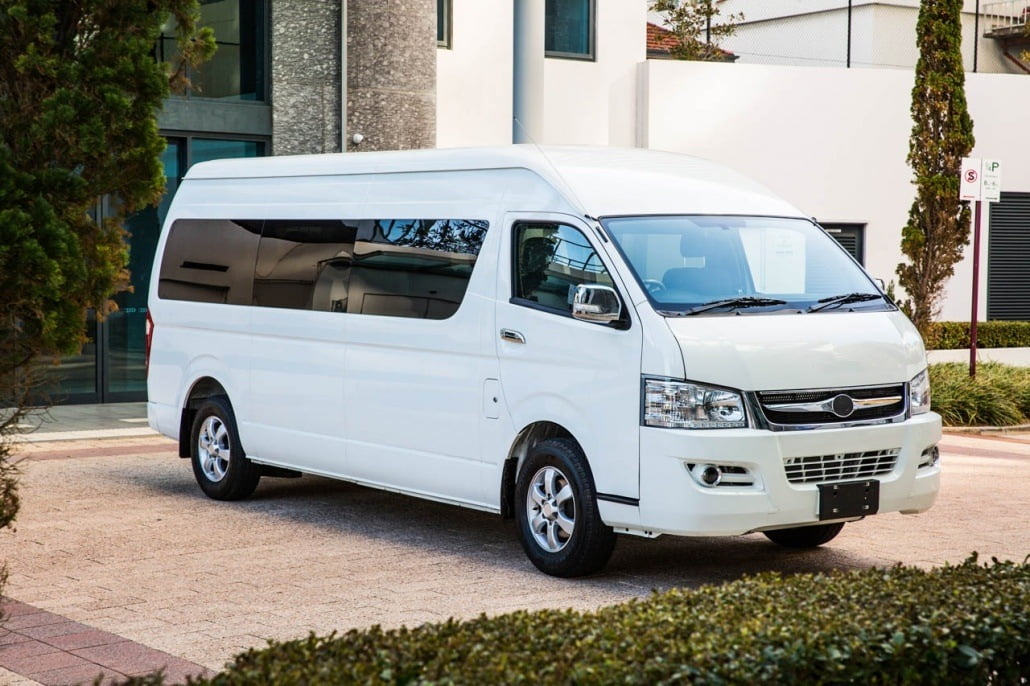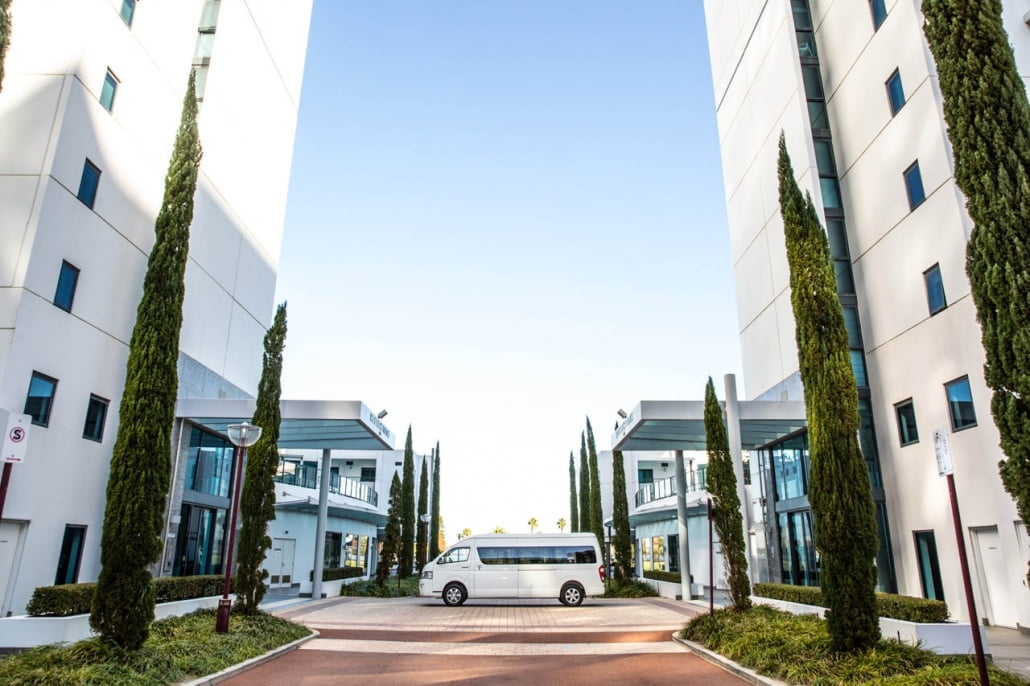Truck journalist David Meredith runs his eye over the first all-electric commuter bus to hit the local market and examines its credentials.
New Tech – Familiar Shape
Up front – the Joylong E6 is NOT a limo. It’s a practical, robust people mover tasked to carry up to 14 people in reasonable, air-conditioned comfort, with the potential for major savings in running costs and of course, zero running emissions.
The earlier generation Toyota HiAce base is predictably functional, with familiar and clunky ergonomics for the driver and passenger, and vision that European vans have dramatically expanded on. But the passenger compartment is well fit-out and comfortable, with sufficient room for most Aussie frames.
I drove the Joylong recently on a combination of city and suburban roads, with plenty of traffic to exercise the bus’s agility and responsiveness. Most impressive was the cruise at freeway speeds. I only had a short stint on the Kwinana Freeway, and there was a stark difference from the market-leading HiAce, with no rumbling, diesel clatter or transmission hum. The rear-mounted motor was silent – none of the usual electric motor whining that is evident on most electric cars. I could happily do lots of kms in the Joylong and it was clear all the passengers could carry on conversations without raising their voices. Airconditioning fans were the only real noise intrusion. A vast improvement on a diesel or petrol people carrier.
For the driver, the noise reduction adds to comfort but highlights the older style instrument panel and controls. An umbrella handbrake echoes the past, and the dials lack the digital finesse of current dash display advances.
However, the gauge on the right-hand side of the instrument panel, although small is actually very useful. It only displays the amperage in or out as well as the battery charge level but is a far more practical driving tool than the video game displays on some other hybrids and electric vehicles that display as much pointless information as possible and seem to compete for complexity.
Driving electric vehicles draws you in to keeping an eye on power usage, probably because the information is always in your face. I found it useful to recognise the actual drain or charge under different braking conditions and power demands. The central information display has an option for calibrating the regeneration rate, and at 100% and under strong braking I saw 160amps input. At 50% regen the most I could put back in was around 70amps, but regen cuts out completely when you get down to 20km/h. Below that you’re dependent on the service brakes.
Maximum throttle drew 172amps. When stopped the system hummed along at 2amps, bumping up to 8amps when the aircon compressor cut in.
There’s just one quirk that may be unique to the test vehicle. This Joylong featured the turbo-lag you get when you don’t have a turbo! I counted to nearly one and a half seconds before any throttle application resulted in movement. Not a problem usually you might say, and easy to drive around. But when you let go the brake on a decent slope and hit the throttle, it rolls back nearly half a metre before the motor engages. I tried holding the brake on and applying throttle but it seems like the brake disables the throttle. I worked around it by keeping some throttle on when I came to a halt, then letting the brake go, at which point it accelerated immediately.
I reported this to the distributor and he was surprised, as he was assured by the factory that the bus has an automatic hill-hold feature built-in. However the dealer, Perth City Joylong in Victoria Park mentioned similar feedback from existing customers. Clearly some further research is needed there.
The Joylong E6 isn’t a high-performance van by any means. Even with full throttle, progress is sedate. On a steep hill it’s best at sub-50km/h speeds. The 60kW motor and 86.1kW/h battery, both liquid cooled, are not in any way highly stressed, so the prospects of a lengthy and reliable ownership experience seem promising.
Configured with 12 seats in the back there is plenty of room in Joylong’s 6-metre long commuter bus for a group of Aussie-sized adults. Industrial transport to work sites and the like would seem to be a great opportunity for a bus that has clear Toyota body engineering links and a driveline that is tailored to the task rather than cranked up for unnecessary high performance.
Operators in the commercial and industrial sector would do well to drive the Joylong before re-committing to replacing a diesel bus with another diesel.

The test truck was provided by Joylong Automobiles Australia, the national distributor of Joylong. David Meredith was commissioned by Joylong to provide an independent road test report of the E6 Commuter bus. David retired as the editor of The West Australian’s truck column in 2022. He has over 15 years’ experience driving trucks on highways and proving grounds around the world for all major manufacturers and has been published in all major Australian transport and trucking journals. His work has also been translated for popular driver publications in Europe. He continues to provide road test and WA transport issue stories for the national Big Rigs publication.



